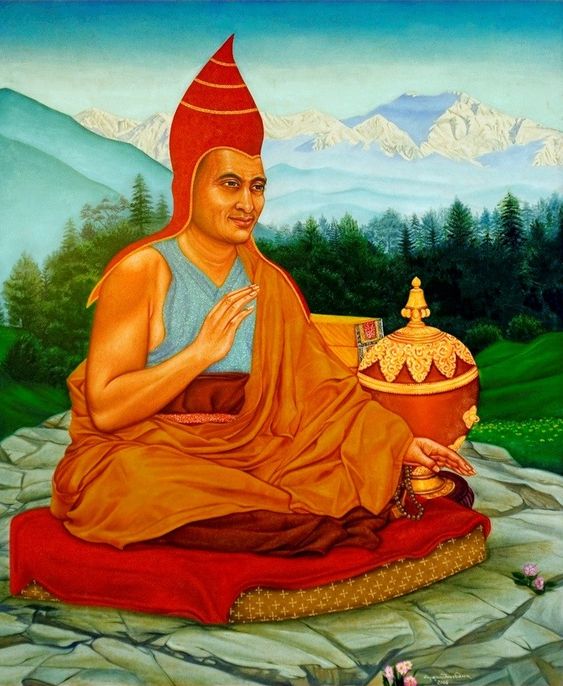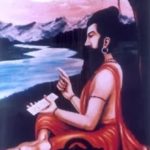The contribution of Aandhra to Buddhism cannot be minimised. Indeed, Amaravati‘s status as cultural capital of Aandhra was, to large degree, due to both Avalokiteshvara as well as Amareshvara .
However, history has often been coloured not only by caste and creed, but also by agenda. While it is important for Aandhras to reclaim what is ours (whether it is Aandhra samskrthi or all of Aandhra desa) it is important for us to acknowledge what is not ours. Other regions of Bhaarathavarsha have unfortunately developed reputations for claiming cultural aspects of others (cough, Punjab…cough, cough Bengal…cough, cough, cough Kashmir…). It is imperative that the inheritors of the Imperial Aandhras preserve a reputation for open-mindedness as well as truth rather than parochialism and propaganda.
Acharya Nagarjuna has long been assigned to Aandhra. However, there were at least 2 famous Nagarjunas (until the most famous one of recent date). One is Siddha Nagarjuna (some assert Bhadanta Nagarjuna) while the other is the more famous founder of the Madhyamika School of Buddhism. Contrary to the conventional paradigm, the latter was not an Aandhra Braahmana, but per Kalhana, was a Northern Kshathriya. The former, however, was an Aandhra. Much like Dharmakeerthi, there were many such in this mould.
Another such is the topic of today’s article in our Continuing Series on Andhra Personalities: Bhavaviveka.
Introduction
Buddhism in general, and Mahayaana in particular, has had a long standing association with the Aandhra desa of ancient Bhaarathavarsha. The Bauddha Dharma developed as an independent religion to the historical Vedic religion of the four varnas. In contrast to the latter, the Buddha specified that Bhikkhus (monks) could come from any caste. He only stipulated that Bodhisattvas would come from the Kshathriya and Braahmana varnas as the elite classes had the most status to minister to the masses.
https://twitter.com/RamaInExile/status/1580896689434423296
It is clear that the Tathagatha was navigating the sectarian concerns of the time (sadly relatable even today), and in response to assertions of superiority, gave his own counter-assertions. In the end, he underscored that venerable scholar-monks (Bhikkhus) could come from any background—that is the key takeaway.
Unfortunately, sectarian concerns did not stop there, and as with any religion, differences in interpretation led to new sects and new views—even about the Buddha.
“But Heenayaana looks upon Buddha only as a Tathaagata a historical person who aims at reforming the contem-porary religious system. No doubt the Theravaadins or Heenayaanists have the concept of Bodhisattva, but for them Saakyamuni is Bodhisattva only before the attainment of Buddhahood. They are opposed to the introduction of even the slight deviation in the original canon and believed in the efficacy of ascetic life for the attainment of the arhathood, which is their aim. Because of its rigid orthodoxy it came to be known as Katinayaana. They paid no attention to the popular religious sentiments and requirements.” [1, 10]

These are the features which distinguish Mahayaana from Hinayaana:
- Divinity of Buddha
- Trikaaya Theory
- Bodhisattva Doctrine
- Devotionalism
- Altruistic Morality
- Eligibility for Laity
- Dharma Soonyataa
- Ideal of Buddhahood [1,11]
“In the Saddharma pundareeka, Gautama Buddha is described as the loving father of all creatures and all pious Buddhists are exhorted to worship and adore him. The sukhaavatee-vyuha promises rebirth in the Amitaabha Buddha’s paradise (Buddhakshetra) to all those who think of him and utter his name with love and devotion. According to the Saddharma Pundareeka Buddha is not an ordinary deity, but the Devaatideva, the paramount god. He is the creator of all Bodhisattvas.” [1,11]
Thus, not only did later Hinduism adapt to Buddhism, but the reverse is seen, wherein Mahayaana Buddhism adapted ritualist and even theist aspects of Vedic Dharma. Many of the Heenayaana Sect strongly rejected this change, which they saw as a corruption of Siddhartha Gauthama’s teachings.
“In the Second Council, after a long discussion the Vajjian practices were rejected as opposed to the Vinaya by the President, Sabbakaami. Those who supported the president came to be known as the Sthaviravaadins or Theravaadins. Those who supported the Vajjian monks were expelled from the Sangha.” [1, 4]
Exiles from the Second Council soon formed their own Sangha. Over time, they became more numerous than their rivals and were soon dubbed Mahasaanghikas, as they had the greater institutional power. This was later called Mahayaana (Greater Vehicle) in contrast to the pejoratively dubbed Heenayaana (Less Vehicle).
“Ekayaana means unique yaana whereas Dviyaana means only secondary yaana. Bodhisattvayaana is always superior to Sraavakayaana and the aim of Buddha-hood is naturally much higher than Arhathood.” [1, 5]
“Because of the large number comprising of their sangha they called themselves as Mahasaanghikas. As the Mahasaanghikas tried to introduce new practices in the discipline, not sanctioned by the Vinaya and tried to propagate them, they were taken by the Theravaadhins to be opposed to the Dhamma.” [1,5]
However, as with other religions, politics soon began to occlude truth. The backstory of the sages subsequent to the Buddha were adapted to suit agendas. Regardless of origins, it is an accepted fact by all parties that Mahayaana as we know it is credited to the figure known as Nagarjuna.
“It is universally agreed that Acaarya Naagaarjuna has systematised and propagated Mahayaana Buddhism. In his commentaries on Prajnaa-Paaramitaa, Aacaarya Naagaarjuna says that Sraavakayaana: was for the individual salvation, whereas the Mahayaana was for the benefit of the entire mankind. Philosophically, Mahayaana stands on a much higher plane than Heenayaana. Naagaarjuna says in the same work that Sraavakayaana believed in the Soonyataa of the individual entity (pudgalasoonyataa) but Buddhayaana asserts that soonyata not only of individual entity but even of cosmic existence (sarvam soonyam).” [1,7]
He had numerous adherents and even direct students. One such figure in his parampara is the topic of today’s article.
Background
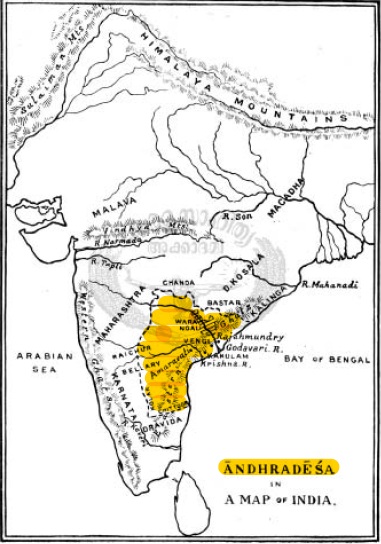
“Bhaavaviveka lived in a place on a mountain cliff or great rock hill not far from the south side of the capital Dhaanyakataka. Most of the accounts unanimously state that he was born in Kshatriya family of Malayagiri. About 20 miles from Dhaanyakataka, there is a place Mangalagiri, where there is also a hill.” [1, 83]
As such, many identify Mangalagiri with Malayagiri.
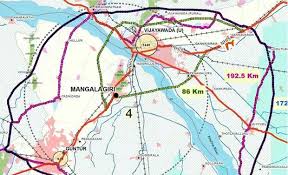

“Yuan Chwang holds Bhaavaviveka as a contemporary of Dharmapaala whereas I-tsing places Bhaavaviveka earlier than Dignaaga and Dharmapaala.” [1, 83]
He is said to have gone to Madhyadesa where he became a student of Sangharakshitha. Bhaavaviveka studied Mahayaana and Maadhyamika under the latter. After completing his studentship, he returned to Aandhra desa and presided over 50 monasteries and hundreds of students. [1, 83]
“By about the 5th century A.D., the Maadhyamikas were split up into two sects: the Praasangika and Svaatantrika. The sects were founded by Buddha paalita and Bhaavaviveka respectively. Both of them were associated with Aandhradesa. Though we could gather some information about Bhaavaviveka, very little is known about the life and activities of Buddhapaalita. But both of them are known to be the disciples of Sangharakshita.” [1, 82]
Bhaavaviveka is notable for his exegesis on Maadhyamika, in his modified form called Svaatantrika. However, he rejected the Praasangika system of Buddhapaalitha, and instead propounded that rather than utilise reductio ad absurdum, serialised and independent logical arguments should be deployed instead. In his view, the aim was absolute truth rather than mere dialectical victory in Tarka.
“He stated that soonyataa was not the denial of the empirical validity of things but only their ultimate reality not the assertion of non-existence of things but the dogmatic assertion of existence.” [1, 84]
Achievements
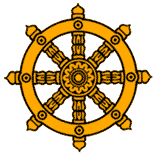
This Buddhist sage of Aandhra had achievements that ran the gamut. From mastering Mahayaana to forging his own sub-sect to authoring numerous commentaries, he is widely respected as a scholar and debater.
“Bhaavaviveka was one of the great masters of Mahayaana saastra and a renown[ed] dialectician. He wrote in defence of Naagaarjuna and propagated his system. He is known as Bhavya also.” [1, 83]
“Bhaavaviveka is credited with the authorship of the following four important works:
- Mahayaana karataalaratna Saastra
- Maadhyamika hrdaya tarkajvaalaa
- Madhyamakaartha samgraha
- Prajnaa Pradeepa
The Tibetans ascribe to him four more works:
- Pradeepa Uddyotana naama-teekaa
- Panca krama-panjikaa-naama
- Madhyamakahrdaya vrtti tarkajvaalaa
- Nikaayabheda vibhanga Vyaakhyaana” [1, 84]
The southern Kshathriya subsequently built upon his northern Kshathriya predecessor to develop the Svaatantrika system. [1. 85]
Nagarjuna’s Moola Maadhyamaka Kaarikaa remains a classic. Lesser known, but of pivotal importance, was Bhaavaviveka’s Prajnaa-pradheepa, which was an expository on the former.
His Karataala-ratna would be translated from the original Sanskrit into Chinese by Yuan Chwang. However, his scholarship is best embodied by the Tarka-jvaalaa. “In this work he criticised the views of Samkhya, Vaisesika and Vedaanta, often quoting from the original texts and expounded the Svaatantrika method. In his commentary on Tarkajvaalaa, Yuan Chwang says that Bhaavaviveka refuted not only the non-Maadhyamika doctrines, Heenayana as well as Yogaacaara but also Brahmanic schools of thought.” [1, 83]
Ultimate wisdom negates the entire network of concepts, and it moves without moving into the clear sky of reality, which is peaceful, directly known, non-conceptual, non-verbal and free from unity and diversity.#Acharya #Bhavaviveka#Buddhist scholar pic.twitter.com/Lp77NZfbku
— aficionado (@concepts2021) March 10, 2022
“In his Prajnaa Pradeepa, a commentary on the Maadhyamika Saastra, Bhaavaviveka says that Saddharma (true law) is pure and it can do away with all sorts of sufferings as well as their semblances. Therefore, it is described as pure and hence Mahayaana.” [1, 8]
Legacy

“For about 300 years Mahayaana exerted profound influence on the social and cultural life of Aandhras.” [1, 100]
The impact of Mahayaana Buddhism, and by extension Bhaavaviveka, cannot be minimised. From art and architecture to religion and politics, it brought about a sea change in Aandhra society. Many of the attitudes of modern Aandhrites can be traced to Buddhism. Liberal but not libertine, rooted but not bigoted, Aandhra’s Bauddha Dharma brought both international identity and a dynamic society. Though Vaidikas continued to practice their traditions as they had since the earliest ages, the lower classes were uplifted like never before. In contrast to common assumption, it was not simply royal patronage that brought about its prominence.
Vanijas (merchants) & Aavesakas (artisans) were the primary patrons of the Buddhist faith.
“The artisans, merchants and gahapatis or the landed gentry who were rich, played a dominant role in society. Internal and maritime trade expanded. Vijayapuri, Dhaanyakataka, Bhattiprolu Ghantasaala and Tamraapa appear to have been flourishing centres of trade.” [1, 105]
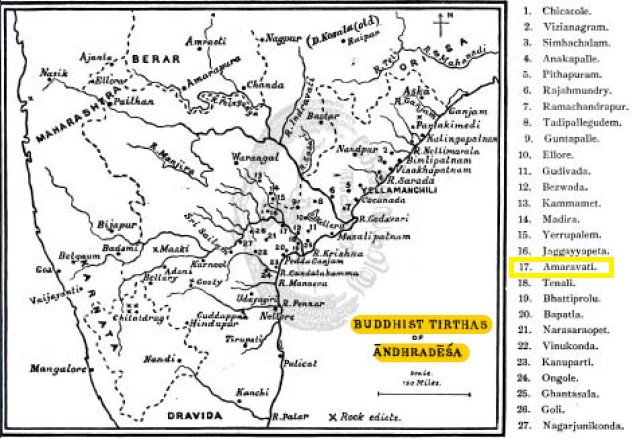
Indeed, in the realm of gender equality, Aandhra appeared to be more progressive than other regions. The role of Buddhism in educating and uplifting women had no small role in this matter.
“Some of the inscriptions from Amaravati reveal that women were properly educated and served even as teachers. This is evident from one of the Amaraavati inscriptions which says that Moolaa upaasikaa is a disciple of the female teacher Samudiyaa (upaadhyaayanee). Another inscription mentions a lady Navakammikaa, Superintendent of New works. Even in the practice of religion and in aiming at spiritual development, women did not lag behind men. Another inscription from Amaraavati records the gift of a nun Rohaa and she is described as passed beyond the eight worldly conditions. She is the daughter of the venerable Sujaataa of great self-control.” [1, 103]
Undoubtedly, the role of local philosophers was responsible in no small measure for this societal dynamism. Irrespective of Maadhyamika Nagarjuna’s origin in the north, Dharmakeerthi and Bhaavaviveka (among others) can be celebrated as Aandhra natives.
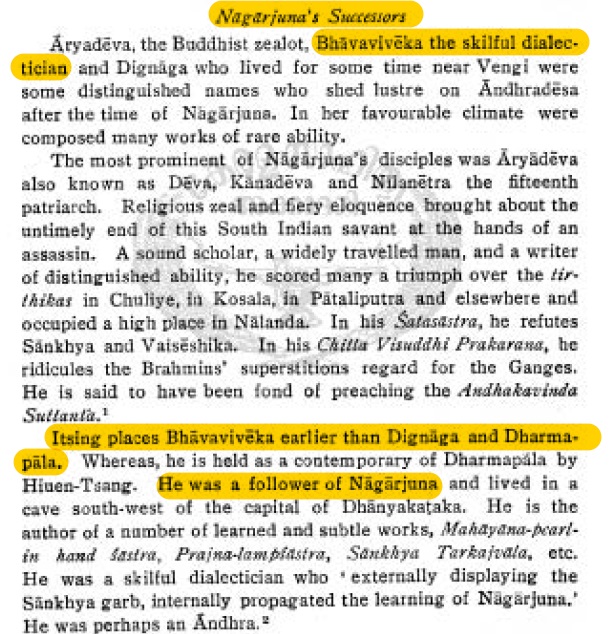 [2, 62]
[2, 62]
“No other instance than this is needed to explain the popular nature of Aandhra Buddhism, and the cosmopolitan nature of the Buddhist institutions. Kumaarilabhatta might be right when he said in his Tantravartikaa that Buddhism appealed to those who were outside the pale of the Varnas” [1, 102]
References:
- Sitaramamma, J. Mahayana BUddhism in Andhradesa. Delhi: Eastern Book Linkers. 2005
- Subramanian, K.R. Buddist Remains in Andhra Pradesh & the History of Andhra. Madras: Diocesan. 1932
